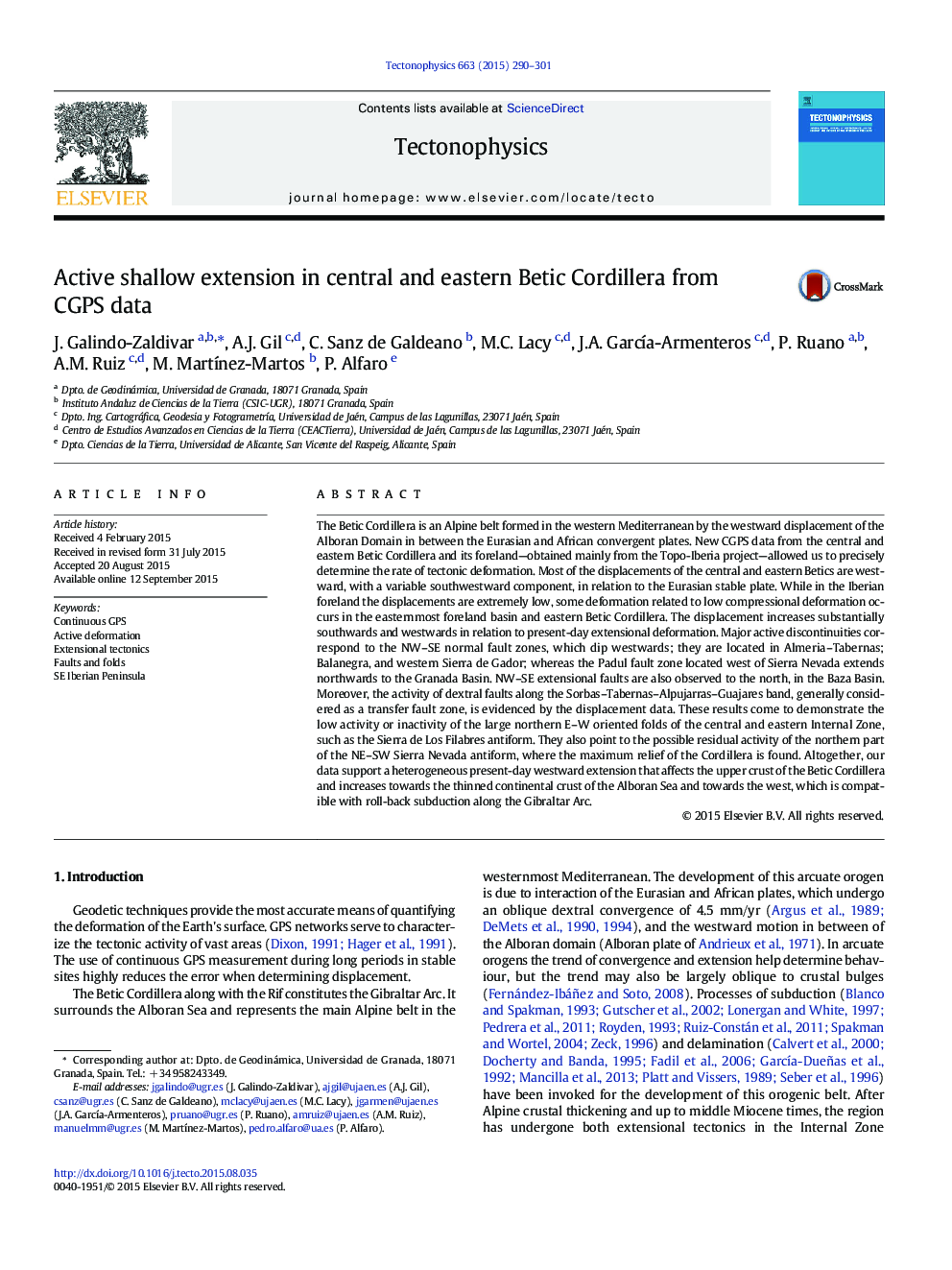| کد مقاله | کد نشریه | سال انتشار | مقاله انگلیسی | نسخه تمام متن |
|---|---|---|---|---|
| 6433548 | 1636732 | 2015 | 12 صفحه PDF | دانلود رایگان |

- Displacements to the W and SW occur in the Betics with respect to stable Eurasia.
- Deformations are mainly concentrated along NW-SE oriented normal fault zones.
- E-W dextral faults and, locally, NE-SW folds continue to be active.
- Large E-W folds of the northern Internal Zone are scarcely active or inactive.
- Extension is related to Gibraltar Arc subduction roll-back.
The Betic Cordillera is an Alpine belt formed in the western Mediterranean by the westward displacement of the Alboran Domain in between the Eurasian and African convergent plates. New CGPS data from the central and eastern Betic Cordillera and its foreland-obtained mainly from the Topo-Iberia project-allowed us to precisely determine the rate of tectonic deformation. Most of the displacements of the central and eastern Betics are westward, with a variable southwestward component, in relation to the Eurasian stable plate. While in the Iberian foreland the displacements are extremely low, some deformation related to low compressional deformation occurs in the easternmost foreland basin and eastern Betic Cordillera. The displacement increases substantially southwards and westwards in relation to present-day extensional deformation. Major active discontinuities correspond to the NW-SE normal fault zones, which dip westwards; they are located in Almeria-Tabernas; Balanegra, and western Sierra de Gador; whereas the Padul fault zone located west of Sierra Nevada extends northwards to the Granada Basin. NW-SE extensional faults are also observed to the north, in the Baza Basin. Moreover, the activity of dextral faults along the Sorbas-Tabernas-Alpujarras-Guajares band, generally considered as a transfer fault zone, is evidenced by the displacement data. These results come to demonstrate the low activity or inactivity of the large northern E-W oriented folds of the central and eastern Internal Zone, such as the Sierra de Los Filabres antiform. They also point to the possible residual activity of the northern part of the NE-SW Sierra Nevada antiform, where the maximum relief of the Cordillera is found. Altogether, our data support a heterogeneous present-day westward extension that affects the upper crust of the Betic Cordillera and increases towards the thinned continental crust of the Alboran Sea and towards the west, which is compatible with roll-back subduction along the Gibraltar Arc.
Journal: Tectonophysics - Volume 663, 16 November 2015, Pages 290-301